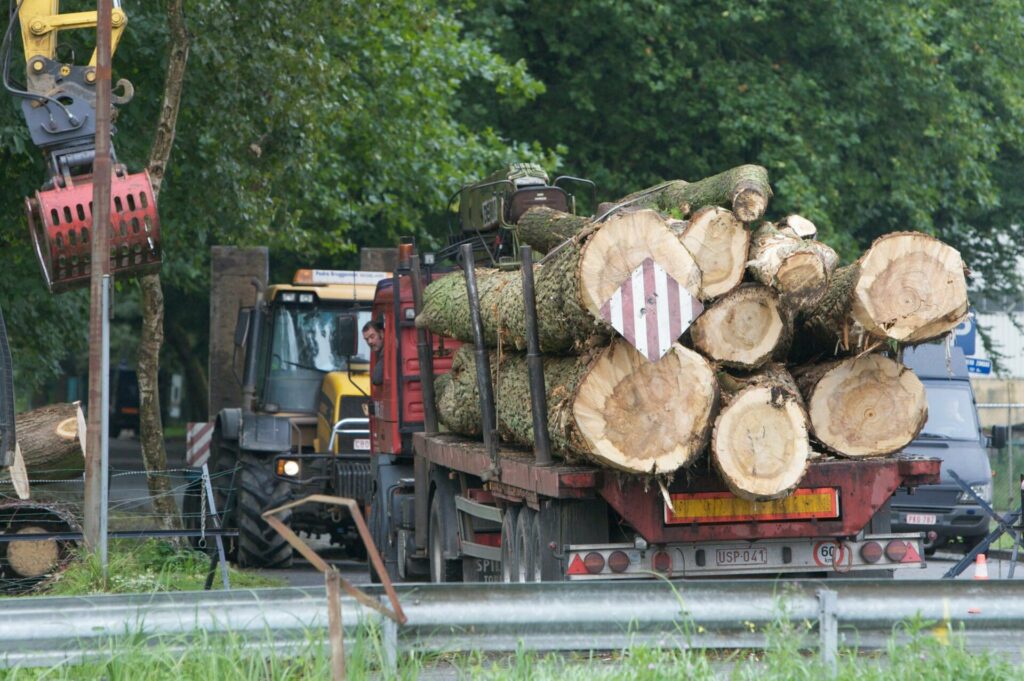One of the best things about living in Brussels is easy access to green areas – whether urban parks like Josephat, Woluwe or Laeken or the wooded wedge that starts in the Bois de la Cambre and meanders through the majestic UNESCO-protected Fôret de Soignes to Waterloo.
Yet Brussels’ status as one of the greenest cities in Europe is under threat due to the chopping down of trees on a scale that would make a Brazilian chainsaw gang proud.
Since 2010, over 62,000 tall trees have been hacked down in the Brussels region, according to newly compiled figures from the Help4Trees NGO, which has launched a petition against the felling. This industrial-scale deforestation of Brussels not only goes against the stated policy of the regional government to increase tree cover and fight against climate change but has dire consequences for the quality of life of Brussels residents.
Aside from their aesthetic value, trees absorb carbon dioxide, produce oxygen, filter particulate matter, cool the air, prevent heat islands, limit cold winds and provide shelter for birds and animals. There is also a growing body of evidence showing that people living in areas with a higher density of trees display fewer signs of stress, anxiety and depression than those living in tree-scarce areas.
So if trees are vital to urban well-being, the fight against climate change and the protection of birds and animals, why are so many being sawn down in Brussels?
Greedy speculators who view every wooded area as a wasted opportunity to build more flats and houses is one reason. Another is the administrative labyrinth that confronts anyone concerned about the protection of green spaces in the capital. The management of trees in the Brussels region falls under 22 different authorities – the 19 local councils and three regional bodies. These authorities not only have conflicting policies, they also don’t share statistics about the number of living, felled or threatened trees.
The only thing the authorities have in common is an eagerness to dole out permits to tree-choppers. While 62,268 requests for permits were approved between 2010-23 - not counting thousands of magnificent beeches in the Fôret de Soignes - just 2,033 were turned down. This is not surprising. Permits to lop down trees usually require expert advice from tree management companies. But since these companies are paid to produce their reports by the permit demanders, there is little incentive to refuse them.
I can see the consequences of this from the window where I am writing this article. Opposite my house in the centre of Uccle is a beautiful beech wood that provides an urban oasis for foxes, squirrels, owls and a deafening flock of parakeets. In the last seven years, 52 trees - roughly a third of the forest cover - have been sliced down to create more light for the owners of the posh flats nestled in the woods.
The official reason for the felling is because the trees are ill or dangerous. But delve into the reports submitted by the landscapers and you see scant evidence to support this.
Of course, all forests need to be managed. But the scale of chopping in Brussels is 20 times more than the scale of replanting – just 3,254 trees have been replanted in the capital since 2010, according to official figures. In addition, a new tree takes 25 years to produce the same environmental benefits as a tall tree, so these measures will do nothing to combat climate change, air pollution and urban heat pockets in the short to medium term.
It's easy to get depressed about the loss of tree cover in Brussels and the lax enforcement of rules that has allowed it. But that doesn’t mean nothing can be done to protect the capital’s precious trees. With local and regional elections looming in May, now is the time to put pressure on politicians to not just preserve Brussels’ wooded areas but to commit to increasing tree cover over the next five-year mandate.
The region could also play its part by adopting an ambitious tree strategy, or at the very least creating an inventory of trees in Brussels. And URBAN, the body which rubber-stamps most of the requests for tree-cutting permits in Brussels, should only be allowed to do so after advice from an independent body, not tree management companies working for their clients.
Most importantly, if trees are under threat in your area, get involved in your local community. When tree-removers arrived to fell two 100-year-old beeches on my street earlier this month, my neighbour and I asked to see a permit. Turns out, the owners of the gated flats didn’t have one – just an email from the friendly folk at URBAN authorising them to saw away. In response we have sent letters of protest to local and regional authorities and launched a petition to classify the thinned-out wood in front of our houses as a protected zone.
In recent years Brussels’ authorities have become more conscious of the need to green the urban environment in response to climate change. Just this month, Elke Van den Brandt the Minister of Public Works and Mobility, said: "Every Brussels inhabitant can propose a new green space."
This is welcome. But more than new green spaces, Brussels urgently needs to protect the ones it already has - and is in danger of losing to over-zealous tree-choppers.

